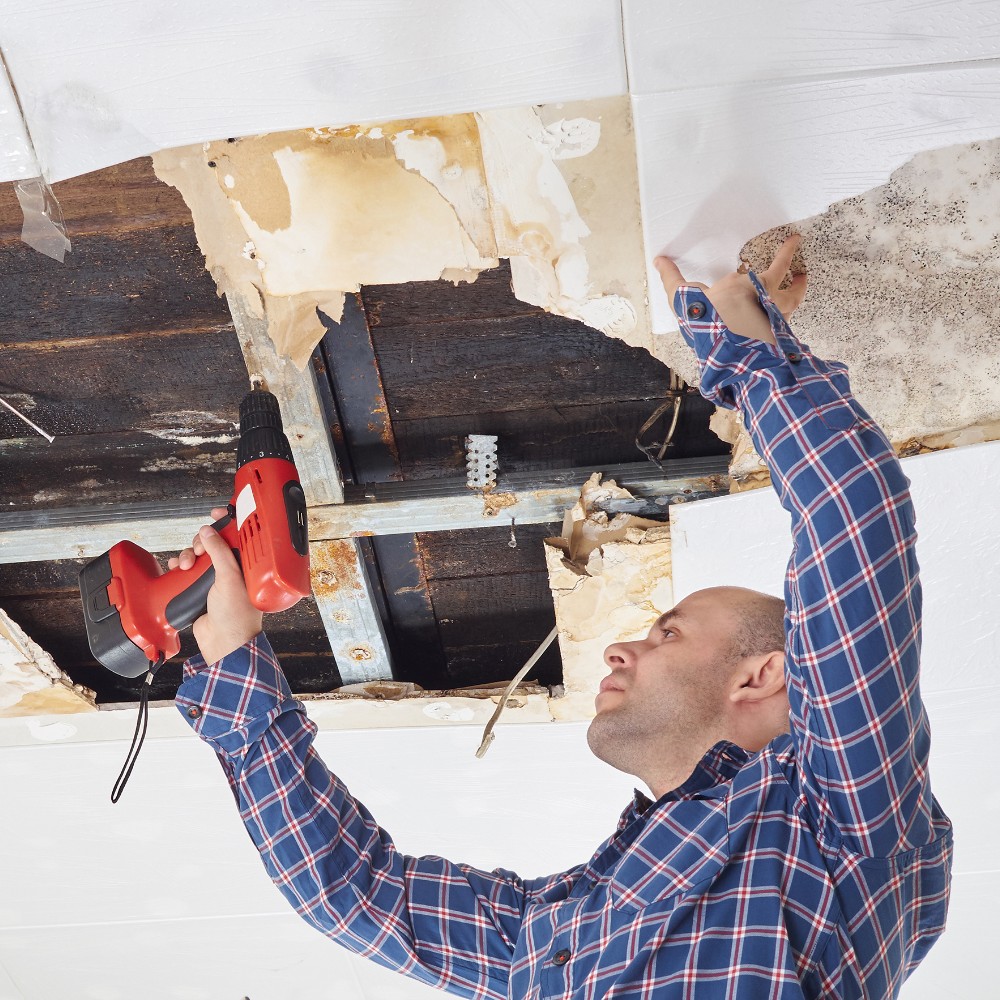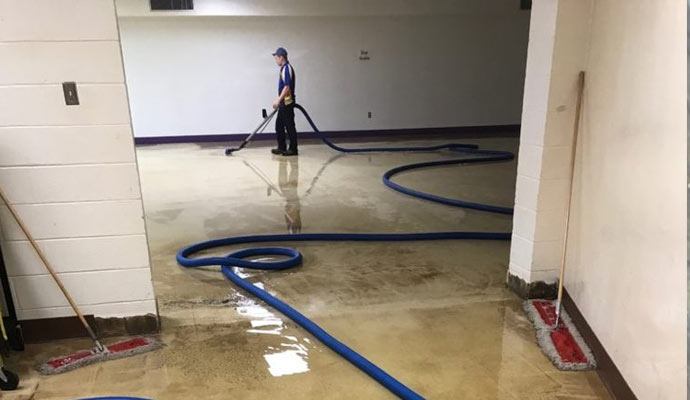Leading Tips for Effective Water Damage Restoration: Protect Your Property Today
Water damage can strike unexpectedly, causing substantial disturbance and prospective dangers. Efficient restoration needs a systematic approach to decrease additional damage. From assessing the damage to executing safety nets, each step plays an essential function in safeguarding property. Recognizing these approaches can make all the difference in the results of a water-related crisis. What important activities should be prioritized to assure extensive security?
Assess the Damage Immediately
When a water damage event happens, it is vital to analyze the damage right away to mitigate additional concerns. This first analysis aids determine the level of the damage and determines affected areas. Water can seep into wall surfaces, floorings, and furniture, leading to mold and mildew development and structural instability otherwise dealt with promptly. A detailed inspection must consist of checking for discoloration, moisture, and stuffy smells, which suggest moisture existence. It is likewise important to document the damage via photos and notes for insurance functions. Involving experts for a more detailed assessment might be needed, specifically when managing surprise or considerable damage. Water Damage Restoration. Early recognition and exact analysis lay the structure for efficient restoration and secure the building from additional complications
Shut Off the Water System
Turning off the water is a necessary action in protecting against additional damage throughout a water-related occurrence. When a leakage or flood occurs, immediate action is essential to lessen the degree of the damage. Locating the primary water shut-off valve ought to be a concern. This shutoff is usually positioned near the water meter or where the water line goes into the property. As soon as situated, transforming the valve clockwise will stop the circulation of water. In situations where the main valve is hard to reach, private shut-off shutoffs for appliances might likewise be used. Promptly closing off the water not just secures the home from added harm however additionally facilitates the subsequent restoration process, making sure that healing efforts can start without delay.
Remove Excess Water Immediately

Getting rid of excess water promptly is crucial for reducing damage and preventing mold growth in influenced areas. The longer water continues to be in contact with materials such as insulation, drywall, and timber, the higher the threat of architectural damage and the development of mold. Water Damage Restoration. House owners should act promptly to examine the situation and use appropriate devices, such as damp vacuum cleaners or pumps, to extract standing water successfully. If the volume of water is considerable, calling professional restoration services may be needed, as they can provide customized tools and experience. Additionally, eliminating furniture and belongings from the affected area can aid to minimize damage and facilitate the overall restoration process. Timely action not just safeguards property but also help in a smoother recovery journey
Dry Out the Affected Area
After eliminating excess water, it is vital to dry the damaged location completely. This entails eliminating any standing water and improving air flow to promote dissipation. Efficient drying out will certainly assist prevent mold and mildew growth and further damage.

Get Rid Of Standing Water
Swiftly attending to standing water is essential for efficient water damage restoration. The existence of stationary water can cause further building damage and produce a setting favorable to mold and mildew development. To minimize these threats, it is essential to eliminate standing water as rapidly as possible. This procedure typically entails making use of submersible pumps, wet vacuum cleaners, or specialized removal equipment. Professionals recommend examining the deepness and degree of the water prior to picking the suitable technique for removal. Security preventative measures need to also be taken, including wearing protective equipment and making sure electrical power is switched off in impacted areas. When the standing water is efficiently gotten rid of, the drying procedure can begin, even more protecting the property from ongoing damage.
Increase Air Circulation
Improving air circulation is vital for properly drying out areas influenced by water damage. This procedure helps to expedite evaporation, decreasing the risk of mold and mildew development. Specialists commonly suggest making use of fans to create a constant air movement throughout the area. Putting box fans in home windows can reel in fresh air, while high-velocity followers can route air flow in the direction of wet surfaces. Flood Cleanup Services. In addition, opening home windows and doors enables cross-ventilation, improving the drying process. Dehumidifiers can also be utilized to eliminate excess moisture from the air, further helping in drying out. By making certain that air distributes openly, home owners can substantially minimize the long-lasting impacts of water damage and protect the stability of their framework
Evaluate for Mold Development
Mold development is a significant worry adhering to water damage, as it can cause wellness concerns and architectural damage. After any flooding or leaks, it is vital to carry out an extensive evaluation of the affected areas. This consists of checking surprise spaces such as behind wall surfaces, under carpetings, and in attic rooms or basements where wetness may stick around. Indications of mold include a moldy odor, staining on surfaces, or noticeable development. Residential or commercial property proprietors need to make use of safety gear when examining, as mold and mildew spores can position health threats. If mold is identified, it is important to resolve it promptly, as delaying remediation can aggravate the issue and increase the danger of significant health and wellness concerns for owners. Early intervention is vital to reliable mold management.

Repair Work and Recover Damaged Structures
When resolving water damage, it is vital to very first analyze the structural honesty of the affected locations. This assessment aids determine possible hazards and notifies the essential repair strategies. Engaging specialist restoration services guarantees that the restoration process is carried out securely and effectively.
Examine Structural Integrity First
Before starting any kind of water damage restoration, it is important to assess the architectural integrity of the afflicted location. This assessment assists determine any type of endangered aspects, such as wall surfaces, beams, or foundations, which may present safety threats - Water Damage Restoration. Evaluating for indicators of warping, splitting, or mold and mildew development is crucial, as these indications can disclose underlying damage that needs prompt attention. Furthermore, recognizing the degree of the damage can assist restoration initiatives and figure out whether fixings are viable or if replacement is needed. It is important to document findings extensively, as this details can be useful for insurance claims or future reference. Prioritizing architectural evaluation guarantees that restoration efforts proceed safely and efficiently, inevitably securing the residential or commercial property and its occupants
Use Expert Restoration Services
Utilizing specialist restoration solutions is important for successfully fixing and bring back broken structures after water incidents. These professionals have the needed training, tools, and experience to alleviate and evaluate water damage thoroughly. They can recognize hidden concerns, such visit site as mold and mildew development and structural weak points, that may not be quickly noticeable. Expert solutions also use sophisticated drying methods and equipment, ensuring that all dampness is eliminated to prevent further damage. In addition, they comply with sector standards and guidelines, ensuring that the restoration procedure is secure and effective. By involving restoration experts, homeowner can expedite healing, decrease long-term damage, and inevitably secure their investment. This proactive technique is vital in maintaining the stability and safety and security of affected structures.
Avoid Future Water Damage
To effectively stop future water damage, homeowners should take on an aggressive approach to repair and maintenance. Routine assessment of seamless gutters, roofing systems, and downspouts is necessary; clogged seamless gutters can cause water overflow and roofing system leaks. Furthermore, looking for leakages in plumbing components and devices can prevent potential damage. Home owners ought to likewise think about setting up sump pumps in basements or low-lying locations to manage water buildup. Securing fractures in foundations and making sure correct water drainage around the residential property are vital action in securing versus water intrusion. Furthermore, keeping moisture degrees with dehumidifiers can stop mold growth. By applying these safety nets, house owners can significantly minimize the danger of water damage and secure their residential or commercial property for the lengthy term.
When a water damage event happens, it is essential to analyze the damage immediately to minimize additional issues (Mold Remediation After Water Damage). Getting rid of excess water without delay is important for reducing damage and avoiding mold development in influenced locations. Swiftly addressing standing water is crucial for reliable water damage restoration. The existence of stagnant water can lead to further building damage and create a setting favorable to mold and mildew development. Prior to initiating any type of water damage restoration, it is important to analyze the structural honesty of the afflicted area